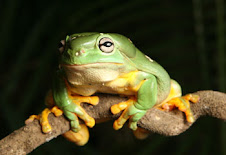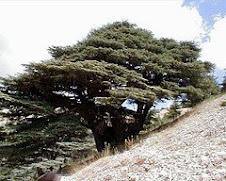An interesting question for sure, and though the answer is not yet known, in the excerpt below from an article / post by Anna Fraser, webmother of The-Tree.org.uk, she mentions that the contenders may include such diverse tree species as Monterey Pine, Hybrid Poplar, Eucalyptus and Fig:
Pick a tree that you are interested in and research the annual wood production for this species in the geographical location of your choice (the figures available are most probably given per hectare or per acre rather than per tree). Find out the energy value of the wood and the annual caloric intake of a human being. Using these figures, you can calculate what you would need to produce enough oxygen for one human being without even knowing how much oxygen they produce.
NASA does research on this using crops and they can produce enough oxygen for one human being with 20 square metres of land.
However we can of course speculate, keeping in mind that trees produce excess oxygen whilst growing and putting on wood (of course when they decay in old age the reverse will be true). Therefore the biggest oxygen producers will be the trees which have the fastest ability to convert the air and the soil they feed on into wood.
Opinions are divided which tree deserves this accolade and the reason for this disagreement is that the growth pattern of trees is inevitably affected by local conditions, such as poor or rich soil, sunshine wind and humidity, which side of the hill does it grow, what helpful fungi are there in the soil and various other factors. A Douglas Fir that can grow up to an amazing 300 ft in a given period in Oregon, may 'only' grow a 100 feet high in the south of California in that same period, because trees have their favourite spot, where conditions for their growth are optimal.
Presently the contenders for the fastest accumulation of square feet of timber in the trunk are Pinus radiata (Monterey Pine). This has shown amazing growth of 8 to 10 feet a year in favoured conditions. It originates from a small coastal area in California and is one of the most popular timber trees in the southern hemisphere, particularly South America.
Hybrid Poplar (cross between European Black Poplar and the North American Eastern Cottonwood). This can also grow of the rate of 8 ft a year in favourable circumstances. Other fast growing trees that deserve a mention are Chitalpa, Chinese Elm, Eucalyptus, Locust tree, and Fig tree, not necessarily in any particular order.
There are of course also genetically engineered trees in the making, which will be trying to break all records. An example is the "Supatree", which is experimentally grown in a remote place in Australia. Investors in the genetic engineerin industry are told that this tree aims to grow as much 30 to 35 feet in the first year and will accomplish in 10 years time what a regular forest plantation tree takes 75 years to do.
This sounds fantastic in a world with dwindling resources (due to growing populations and the silly consumer attitude we have towards the natural world), but please remember that this is a tree which has been engineered far more for business interests, rather than with the Good of the Whole World in mind.
In my opinion the world needs biodiversity and its inherent creativity for survival of the Earth on which we all depend and therefore food and resource security. This is far more important than identical clones, which depend on fertilizer and fossil fuel based growing practices.
Maybe we will be forced to grow Supatrees if we carry on the way we are and squander our precious heritage. If I were a judge with blinkers on, ignoring the real needs of the Earth and therefore people, Supatree would no doubt they would be the winner of your contest as oxygen producers during growth.
But will the world be a better, safer or richer place with Supatree plantations all over the world???
I really appreciate your genuine search for the highest oxygen producing tree, but please allow me to suggest also that oxygen is not the only gift the trees to the wellbeing of the patients of a tuberculosis hospital. Nor necessarily the most important: trees clean air pollution in many different ways and heal also by their presence.
Trees have always been our friends, healers and providers .There is of course infinite beauty in trees and woodland, but there is far more to it than that:
There is something about the aura of trees, that can make you feel as if you're in the presence of a being greater than ourselves. I don't mean greater in statue, but in a knowledge deeper and wiser than most people have.
Few people fail to be impressed by wonderful beings like the Dalai Lama and feel better for meeting him. But many trees are to me like Dalai Lama's and everyone can seek their healing friendship.
Trees seem to know that the Earth is all one. One giant interacting web of life. The divisions between us are artificial and temporary. As a separate identity I give my own contribution to the consciousness/vibes of the Earth, but since I exist only by the grace of inhaling air, drinking water, eating food, interacting in countless ways to make my consciousness grow: How can I think I am not intimately related to everything else?
Full article / post continues at: Which tree species produces the most oxygen?
Conscious readers, renewable power investors, check out:
Best Alternative Energy Investing Websites
Windpower stocks, wind energy company info
Geothermal Energy Investing websites and blogs
Solar-Intelligence.com - Clean Energy as a Path to Peace
Remembering Cornelius Castoriadis, the only French Intellectual with Humor
-
Cornelius Castoriadis reflected on man. And he decided that the role of
each person in the social-historical is so important. Philosopher with an
intelle...
21 hours ago







